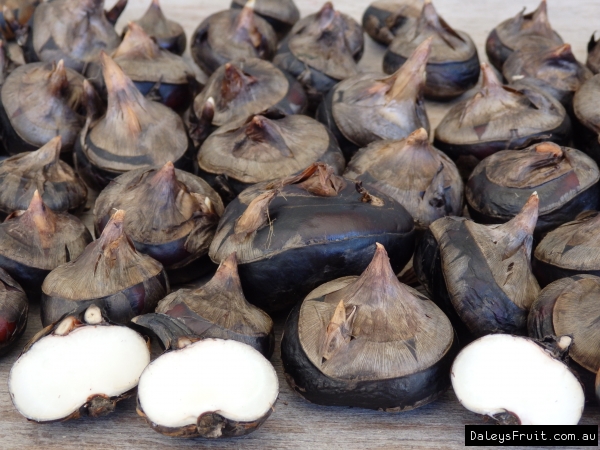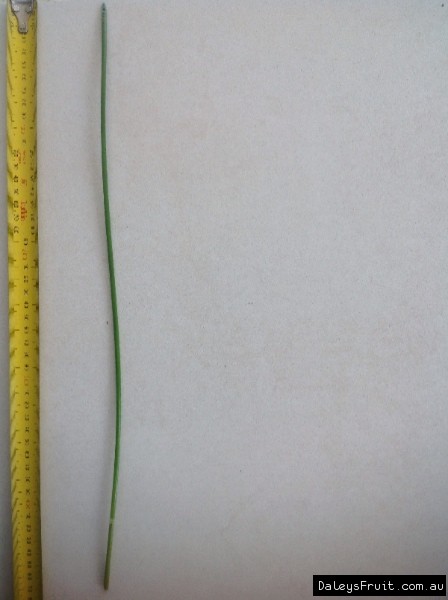Chinese Water Chestnut
Eleocharis dulcis$7.90 ($2.00-$12.90 choose a size)
Specifications of Chinese Water Chestnut
Preferred Climate SubtropicalLearn About Climate Zones
Grown From RhizomeLearn About Propagation Methods
Max Height (when in the ground with good conditions) 0-1m
Plants required to Pollinate 1 (Self Pollinating)Learn about Pollination
Can it Handle Frosts? Sometimes
Amount of leaves in Winter? No Leaves (Deciduous)
Suitability in Pots Yes
Water Requirements Frequent Watering
Is it a Dwarf Fruit Tree? No (Full Size)
Time to Fruit/Flower/Harvest First Year
Sun or Shade Full (Sun:80%-100%)
Preferred Soil Type Poor Drainage (Clay)
Soil pH Neutral (6.6-7.3pH)
Fruiting/Harvest Months July, August, September
Growth Rate Fast
Create a Filter to find similar plants
Customers also bought
These plants are often purchased together. Also check plant information for suitability in your orchard.
Star Apple
$29.00 ($4.90-$59.00 choose a size)
Jujube - Sugar Cane
$124.00 ($119.00-$124.00 choose a size)
Cinnamon Myrtle
$14.90 ($14.90-$19.90 choose a size)
Cassava
$4.95 ($4.95-$19.75 choose a size)
Achacha
$34.00 ($27.00-$129.00 choose a size)
Chinese Red Bayberry
$79.00 ($39.00-$79.00 choose a size)
Customer Tips & Reviews Chinese Water Chestnut
MOGGILL, QLD
Chinese Water Chestnut
Doing well in its tube stock pot and I will be planting out soon. I can highly recommend the video without which I would have done the wrong thing. Looking forward to trying to grow my first crop.
POTTSVILLE BEACH, NSW, Australia
Set up a chub for these , looking forward to eat g fresh .looking for a solar pump to keep them fresh .
Capel, WESTE
Chinese Waterchestnut
Never plant your corms too close together, because the root systems will get entangled & make harvesting a nightmare!
CAWONGLA, NSW, Australia
I have them growing in three ninety litre bowls which they share with the tadpoles, frogs, water lilies, dragonflies,snails and leeches. Dwarf tree frogs love them. Harvest when the tops die down. Keep the pot topped up and provide an object for the ...
CAWONGLA, NSW, Australia
I have wanted this plant for ages, because the chestnuts taste great in asian dishes... now I am doubly keen because I have started basket-weaving, and the stems are wonderful fibres!
Cooroibah, QLD, Australia
Lots of new bulbs, growing strong and well but bulbs are quite small, but very tasty
Carnegie, VIC, Australia
They grew well enough, didn't fill the pond though and are a bit on the small side - 20mm Still okay though.
Bellingen, NSW, Australia
Very easy to grow. Grew3 plant in laundry tub last year. Just replanted 2 tubs this week. Good crop. kept well in fridge.








































